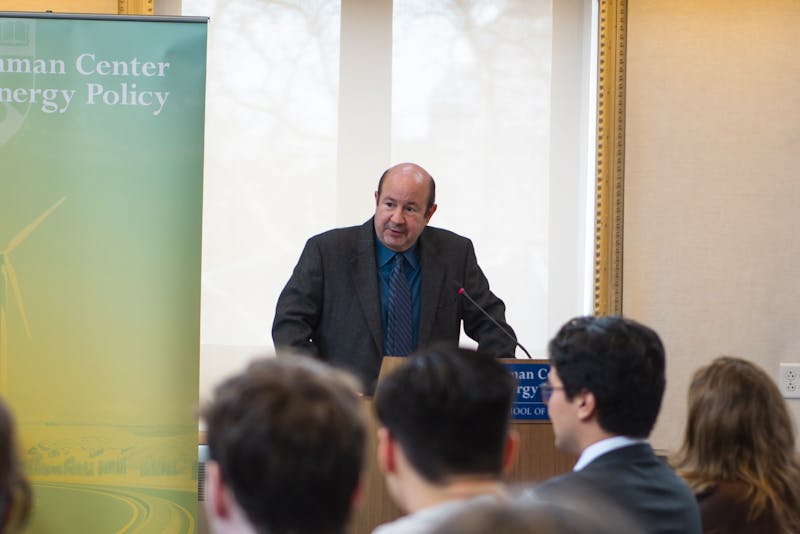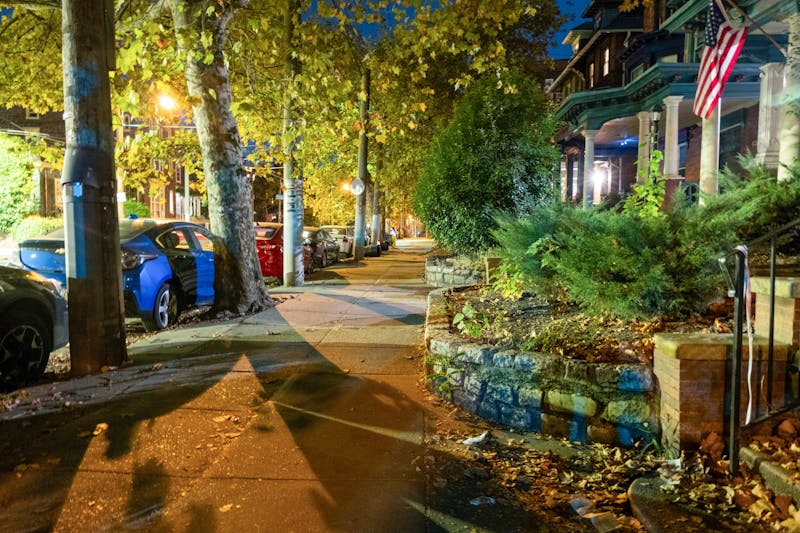The 1979 Quakers knocked off Iona, North Carolina, Syracuse and St. John's en route to the 1979 Final Four in Salt Lake City and a date with Magic Johnson and Michigan State. It is the story of a hard-luck kid from South Bronx whose star shone brightest just when the eyes of the nation were watching. It is the story of a coach with the naive optimism to ask for the improbable from his players -- and get it. It is the story of defying odds and expectations. It is the story of secrets, and the story of Magic. · No one can really be sure how serious second-year Penn coach Bob Weinhauer was when he wrote a letter to each of his players just before the 1978-79 season. The letter outlined five goals Weinhauer had set for his senior-laden team, all of them reasonably attainable except the fifth and final goal. That called for the Quakers to earn a trip to Salt Lake City and the 1979 Final Four -- a feat no team in Penn history had ever accomplished. "I was young, enthusiastic and it was my second year as a college head coach," Weinhauer said. "I tried to be the eternal optimist to the players, but in my own head I was the worst pessimist. But I told the team that when you get to the NCAA playoffs, anybody can win the thing." Weinhauer's goal was not all that far-fetched. The year before, the Quakers had advanced to the Sweet Sixteen and only fallen to eventual runner-up Duke, 84-80, when they blew an eight-point lead in the final minutes. "That game [against Duke] kind of opened our eyes and showed us we were that close," said Tony Price, who averaged 19.8 points per game for Penn in the 1979 season. "We never really talked about how far we could go. We just felt we didn't get a whole lot of respect because we were from the Ivy League." Seeded ninth in the 10-team Eastern Regional bracket in 1979, Penn was the official underdog in every game it played in the tournament that year. Only the handicappers in Las Vegas gave the Quakers any credit, posting them as slight favorites in the opening round against Iona. "When the seedings came out, we laughed about it," said Price, the Eastern Regionals' Most Valuable Player in 1979. "I don't think [the seeding committee] cared for us that much. There was talk about taking away the Ivy League's invitation, but that kind of quieted down after that year." · The Iona game pitted Weinhauer against a fiery, young Jim Valvano, as well as the Quakers' front line against future NBA center Jeff Ruland in what was widely considered an empty battle for the honor of bowing out to top-seeded and No. 3 North Carolina in the second round. Penn opened its tournament run by dancing circles around the Gaels and methodically building a 14-point second-half lead. Suddenly, the Quakers seemed to lose their rhythm. Iona rallied behind Ruland and closed the gap to 59-58 with 6 minutes, 42 seconds remaining. "You know what happened to us?" forward Tim Smith said after the game. "We looked up at the scoreboard in the second half and said, 'Hey, we're 14 points ahead, let's go for the kill.' " Penn proved its poise by hanging on for a 73-69 victory behind Price's 15 points and 12 rebounds and freshman reserve Tom Liefsen's clutch free throw shooting. "My assistants told me we should foul Leifsen," Valvano said after Leifsen broke the Gaels' backs by converting two one-and-ones down the stretch. "They said he shoots 42 percent. Well, maybe he shoots 42 percent in Pennsylvania, but he's a helluva free throw shooter in North Carolina." The Quakers now had themselves a helluva challenge in North Carolina. But then, they also had a secret. According to Penn lore, it was assistant coach Bob Staak who shared the secret with the Quakers players during stretching exercises that fateful Sunday morning in Raleigh, N.C. "Nobody knows it," Staak told them. "But we're going to beat North Carolina." Nobody could have been expected to know it. The Tar Heels, led by Mike O'Koren, Al Wood and Dudley Bradley, had won eight of their last nine entering the tourney. And no ACC school from North Carolina had lost an NCAA Tournament game in its home state in 18 years. With Price and Smith both nursing back injuries, the Quakers' prospects appeared grim. But sharp execution and an airtight zone kept Penn within striking distance. With the Quakers trailing 44-38, Price took over the game. The South Bronx native scored the Quakers' next nine points, while Penn senior center Matt White -- whom UNC coach Dean Smith later called "the most underrated player on the floor" -- assumed command of the paint. And when junior point guard Booney Salters sunk the front end of one-and-one to secure the 72-71 upset, all of Carolina was blue. Princeton coach Pete Carril, whose Tigers had suffered two one-point overtime losses to Penn earlier that season, was quick to celebrate the Ivy League coup. "That was no fluke," Carril said. "If Penn played them again, they would beat them again." · Most media figures across the nation stumbled over one another to label Penn a Cinderella team, but the victory over the Tar Heels had opened some eyes. "Who are we kidding?" Syracuse coach Jim Boeheim said before his Eastern regional semifinal game against the Quakers. "Penn is not an Ivy League team. Penn's a Big 5 team, an Eastern team. They don't belong in the Ivy League because they are too good for that league." What Boeheim didn't know then was the Quakers would be too good -- and, surprisingly, too fast -- for the No. 8 Orangemen as well. Syracuse, anchored by 6-foot-11 shot blocker Roosevelt Bouie, was known to be notoriously partial to the up-tempo game. "I don't think Penn will try to run with us," Boeheim said in a pregame press conference. "No team in the East has, and I don't think Penn will try it." The same time the next day, Boeheim was singing a different tune. "They outplayed us and outhustled us in the first half," Boeheim said after watching the Quakers oust his Orangemen, 84-76. "They beat us up the court after 29 teams couldn't do it." Price once again led the assault with 20 points, seven rebounds and six assists, while Smith chipped in 18. "Price is the best forward we've seen all year," an awed Boeheim said. "He absolutely controlled the game." One game away from their goal, the Quakers caught a break when they drew St. John's, an underdog in its own right, in the regional final. The Redmen turned the game into a walk-a-thon from the opening tip, but a dazzling display of long-range bombs from Smith and Salters early in the second half kept the Quakers ahead by a slim margin. St. John's, fresh from last-second upsets over Duke and Rutgers, just wanted to give itself a chance to win, and that's exactly what the Redmen did when they fouled Salters with 15 seconds remaining and the score knotted at 62. But Booney was ice from the line, and when freshman Vincent Ross intercepted a long baseball pass, the Quakers had fulfilled the destiny Weinhauer had spelled out for them months before. · Respect has always been accorded grudgingly to the Penn basketball program, but when the Quakers arrived in Salt Lake City for the 1979 Final Four, Weinhauer thought they had finally earned themselves a place in the national spotlight. He was wrong. According to most experts, Penn's clock had been scheduled to strike midnight two weeks before against North Carolina. Now, after an improbable run through the Eastern Regionals, the upstarts from the Ancient Eight were rubbing elbows with likes of Magic Johnson and Larry Bird. "They were all nice and polite," Weinhauer said of the media that Final Four weekend, "all the time thinking we didn't belong there." Carril had a more candid explanation. "They're sorry to see Penn in there," Carril said. "They made a lot of predictions and they didn't come true, so to look good, they're saying those things." Much has been made of the day the Quakers met Magic Johnson, but the one thing on which everyone agrees is it certainly didn't help Penn in its quest for national respect. Philadelphia Inquirer sports writer Chuck Newman called it "the best-advertised public execution in collegiate basketball history." Weinhauer tried to make sense of it, but he could not. "We were getting exactly the type of shots we wanted," he said afterward. "Only we weren't hitting them. The game plan went exactly the way we planned, and it just didn't work." The plain fact was Michigan State dominated the Quakers in every phase of the game to earn one of the most lopsided victories in NCAA Final Four history. Led by Johnson's 29 points, the Spartans ran out to a 32-6 lead and were never challenged on the way to a 101-67 victory. Penn went on to lose the consolation game to DePaul, 96-93 in overtime, but the dream had died two days earlier. · Back on the West Philly campus, rabid Quakers fans embraced their conquered heroes. They welcomed back Price, who outshot Johnson and Larry Bird to lead the tournament in scoring with 142 points. They welcomed back a special team with a chemistry so fine-tuned that five of its members would rank in Penn's top 11 in career assists upon graduation. The Quakers' Final Four appearance was lauded throughout the city as the resurrection of Big 5 basketball. "This will certainly benefit Penn," Temple coach Don Casey said of the Quakers' success. "This is Penn's success. Nobody else's. But it is something we [the Big 5] can utilize in recruiting." But more than anything, the Quakers' success was enjoyed by the students. A week earlier, 8,000 fans had marched through campus and gathered in Franklin Field for a send-off to Salt Lake City. Weinhauer, Eastern Basketball's 1979 coach of the year, stepped forward and captured the sentiment Penn has spent the last 16 years trying to resurrect. "This has to be," he said to the crowd, "right now, one of the greatest feelings that we've ever had as a team, and I hope that you've ever had as a person. This feeling of togetherness that we have on campus right now -- we should never let go of it."
The Daily Pennsylvanian is an independent, student-run newspaper. Please consider making a donation to support the coverage that shapes the University. Your generosity ensures a future of strong journalism at Penn.
DonatePlease note All comments are eligible for publication in The Daily Pennsylvanian.







